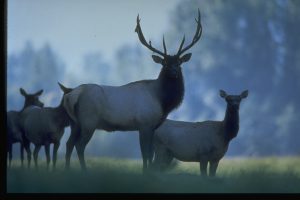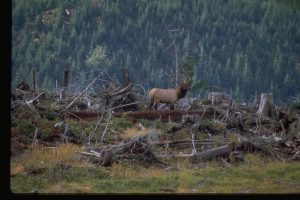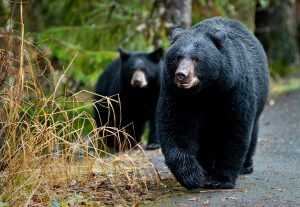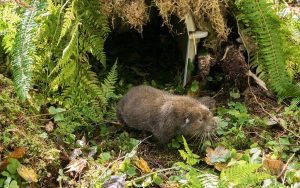WASHINGTON FOREST PROTECTION ASSOCIATION
Animal Habitats
ABUNDANT WILDLIFE IN WASHINGTON’S PRIVATE FORESTS

Washington’s wildlife population is flourishing in private forests. Deer, elk, black bears, beavers, and bats: a short list of some of the wildlife that finds their homes in Washington’s private forests. They have also been the target of scientific research over the past 20 years or so by WFPA and its members. The reason for conducting this research has been to find out how modern day forest practices can best sustain animal habitat while growing trees for forest products, as well as to find out how these animals influence tree health in the forest.
Timber Harvesting Helps Create Deer and Elk Habitat
 Washington’s deer and elk populations thrive on young successional forests, especially in areas following a wildfire or timber harvest. The opening up of the landscape promotes the growth of low-lying vegetation that these mammals feed on. In addition, scientific studies have shown that deer and elk prefer living near forest edges rather than deep in the forests. Harvesting methods, such as clearcut harvesting, can create these forest edges. An abundance of forage, a result of increased sunlight reaching the forest floor from the timber harvesting, provides deer and elk with needed food.
Washington’s deer and elk populations thrive on young successional forests, especially in areas following a wildfire or timber harvest. The opening up of the landscape promotes the growth of low-lying vegetation that these mammals feed on. In addition, scientific studies have shown that deer and elk prefer living near forest edges rather than deep in the forests. Harvesting methods, such as clearcut harvesting, can create these forest edges. An abundance of forage, a result of increased sunlight reaching the forest floor from the timber harvesting, provides deer and elk with needed food.
Black Bears Feed On Young Douglas-Fir Sapwood When Coming Out Of Their Winter Dens

Washington State has approximately 35-50,000 black bears, one of the largest populations in the United States. Black bears usually emerge from hibernation in mid-March when natural foods like berries and insects are limited until the warmer summer months. Until these foods are available, bears resort to grasses, skunk cabbage, mosses, cow parsnip and, to the regret of private foresters, the sugary sapwood of trees.
A single black bear can destroy as many as 70 trees per day. They kill or severely weaken conifers by stripping the bark off the base of the tree and eat the sugary sapwood tissue underneath. This is called “tree girdling.” Tree girdling causes millions of dollars in tree damage each year in Washington alone, and has a large economic impact on forest landowners. To reduce damage, landowners have the option of lethal means to control bear numbers through hunting. A newer and more effective method involves a supplemental feeding program to feed black bears during the spring months when food is scarce.
The Mountain Beaver Presents a Threat to Reforestation in the Western Cascades

The mountain beaver, not related to the well-known stream beaver, is a ground-dwelling rodent. It kills or damages trees on thousands of acres of Pacific Northwest forestlands each year. They can be found in the region of the western Cascades from southern British Columbia to northern California. Mountain beavers have sharp cutting teeth and powerful jaws that can bite through tree branches or sapling trunks. In the months of January through March, their natural food supply is limited so they turn to recently planted conifer seedlings. A single mountain beaver living in a recently planted unit can kill up to 50% of the young seedlings on an acre in only one season. Trapping, although rather difficult, has been the primary method of controlling the mountain beaver population.